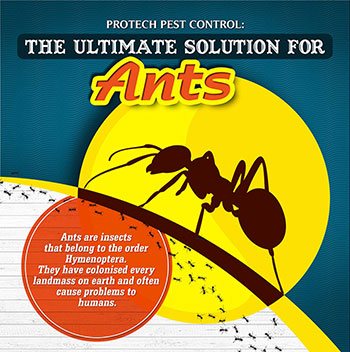Tips For Homeowners To Maintain Rodents Out Of Their Attics
Tips For Homeowners To Maintain Rodents Out Of Their Attics
Blog Article
Developed By-Britt Hutchinson
Envision your attic room as a comfortable Airbnb for rodents, with insulation as fluffy as hotel pillows and wiring much more tempting than area service. Currently, visualize these unwanted visitors throwing a wild celebration in your house while you're away. As a property owner, ensuring your attic room is rodent-proof is not nearly satisfaction; it's about shielding your home and liked ones. So, what straightforward actions can you take to safeguard your shelter from these fuzzy trespassers?
Evaluate for Access Points
To start rodent-proofing your attic room, check for entrance factors. Begin by thoroughly examining the outside of your home, searching for any openings that rats can make use of to get to your attic. Look for voids around utility lines, vents, and pipes, along with any splits or openings in the foundation or home siding. Make certain to pay very close attention to areas where various structure materials fulfill, as these are common entry points for rodents.
Additionally, evaluate the roof covering for any harmed or missing shingles, as well as any gaps around the edges where rodents can press with. Inside the attic room, seek signs of existing rodent activity such as droppings, chewed cables, or nesting materials. Make https://www.tennessean.com/story/opinion/2021/12/22/tips-keep-your-home-pest-free-during-holidays/8997441002/ of a flashlight to extensively inspect dark corners and covert rooms.
Seal Cracks and Gaps
Inspect your attic extensively for any type of fractures and gaps that need to be sealed to avoid rats from going into. Rats can squeeze via even the smallest openings, so it's critical to secure any type of prospective entrance factors. Check around pipes, vents, cords, and where the walls satisfy the roof covering. Utilize a combination of steel wool and caulking to seal these openings efficiently. Steel wool is a superb deterrent as rats can not eat with it. Make sure that all gaps are firmly secured to refute accessibility to unwanted bugs.
Do not neglect wood ants treatment of securing spaces around doors and windows too. Usage climate stripping or door sweeps to seal these locations successfully. Inspect the locations where utility lines enter the attic and seal them off using a suitable sealer. By making the effort to seal all fractures and voids in your attic room, you create a barrier that rodents will find hard to violation. Prevention is key in rodent-proofing your attic, so be extensive in your efforts to seal off any type of prospective entry points.
Get Rid Of Food Resources
Take proactive steps to get rid of or save all prospective food resources in your attic to hinder rodents from infesting the space. Rats are brought in to food, so eliminating their food sources is essential in maintaining them out of your attic.
Here's what you can do:
1. ** Shop food firmly **: Prevent leaving any type of food things in the attic. Store all food in closed containers made of metal or heavy-duty plastic to stop rodents from accessing them.
2. ** Tidy up particles **: Remove any kind of stacks of debris, such as old papers, cardboard boxes, or wood scraps, that rodents might utilize as nesting material or food resources. Keep the attic room clutter-free to make it less attractive to rats.
3. ** Dispose of garbage appropriately **: If you use your attic for storage space and have waste or waste up there, ensure to throw away it frequently and correctly. Rotting trash bin bring in rodents, so keep the attic clean and free of any kind of natural waste.
Verdict
Finally, bear in mind that an ounce of prevention is worth a pound of cure when it concerns rodent-proofing your attic.
By taking the time to check for entry points, seal splits and voids, and get rid of food resources, you can maintain undesirable bugs away.
Keep in mind, 'An ounce of prevention is worth a pound of treatment' - Benjamin Franklin.
Remain positive and shield your home from rodent problems.
